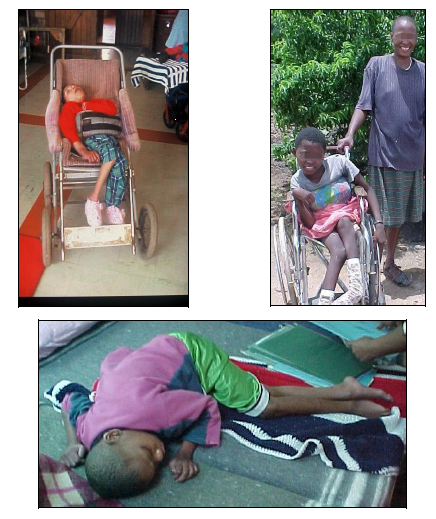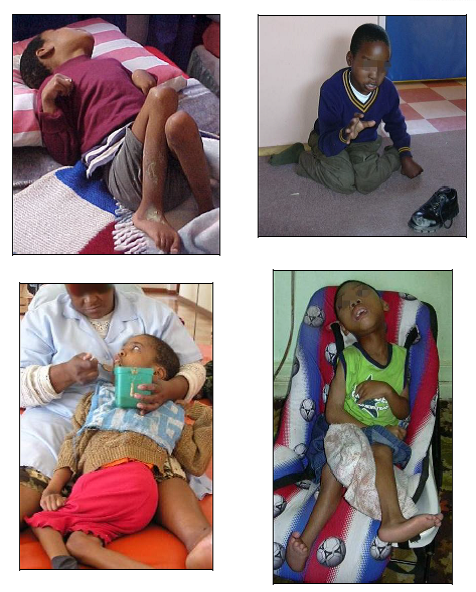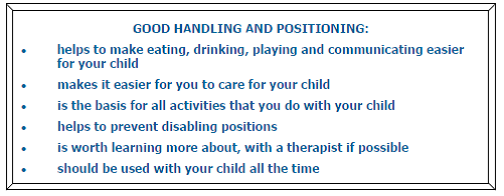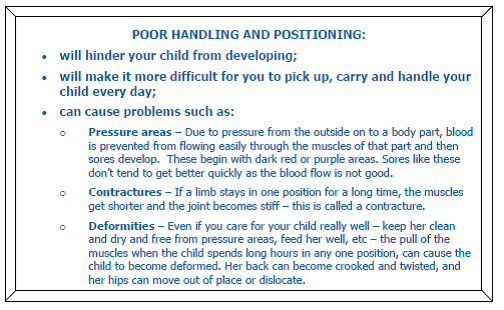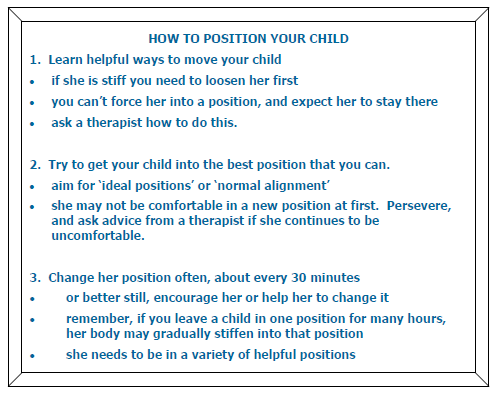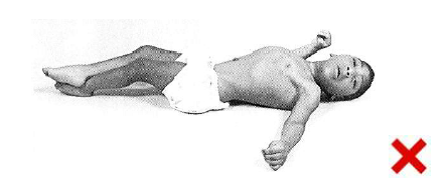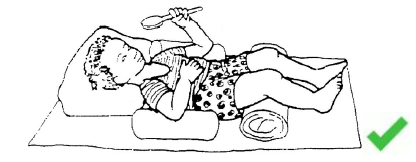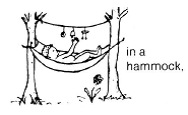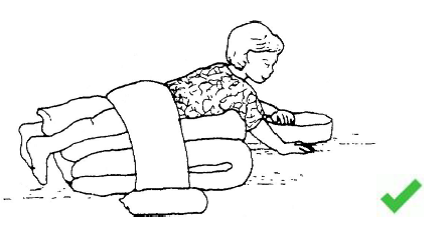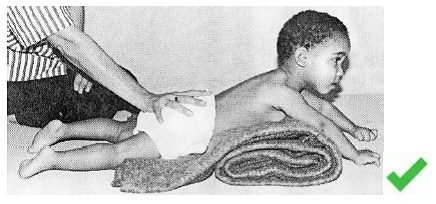Module 3: Positioning Your Child
Page Outcomes[edit | edit source]
When you have finished this page, you should be:
- More confident to position a child with cerebral palsy,
- Be able to show others better ways to position a child with cerebral palsy
Positioning and Handling[edit | edit source]
Here are some photos of poor positioning and handing of children with cerebral palsy
Good Handling and Positioning[edit | edit source]
Here are some of the benefits of good handling and positioning skills:
Now lets look at the problems with poor handling and positioning techniques:
And as children with disabilities gain access to wheelchairs, they very often spend long hours poorly positioned in the wheelchair, and still unable to move themselves. And they still develop a crooked back and other disabling deformities, including eventually breathing difficulties due to the chest space being so crooked and confined. You can see this in some of the pictures above
Now let‟s look at positioning a child, and what you can do to improve her position.
In the next section we will be looking at specific positions, both those that are 'poor' positions, and suggestions for „helpful‟ positions. For each position, we will use this checklist (see diagram below) to help us decide in an ordered way whether the child is in a poor or helpful position.
Lying[edit | edit source]
Supine (on their back)
This is a poor position because:
|
This is a good position because:
|
Supine Checklist:
Head and body
- If she can move her head on her own, make sure it is comfortable
- If she cannot move her head on her own, make sure it is in the middle and comfortable
- Her body (spine) must be straight – support on her sides if needed with a rolled up towel to keep her straight
Legs and feet
- Bend her hips – this helps to release tension in her lower back which is often arched, and it
- helps to relax stiffness in her legs. Place support under her knees to keep hips bent (not under her feet)
- Keep her legs open and uncrossed – use a pillow between if needed
- Feet should be as close to a standing position as possible – if her feet push down, talk to a therapist about the need for an ankle/foot orthosis
Shoulders and arms
- They should be forward and supported, especially if her arms pull back. This position also helps to relax her upper back, and allows her hands to open more easily.
- Lying in a hammock can help to relax tight muscles.
- Babies/small children can „hang‟ in a large towel (held by two adults) to relax tight muscles.
Prone ( on their tummy )[edit | edit source]
|
| |
|
|
Prone Checklist:
Head and body
- In a straight line
- Encourage her to lift her head and look at something in front of her on the floor. This is a good time to get a sibling, also lying on the floor, to play with her
Legs and feet
- Straight – push down on her bottom from side to side in a rocking motion to help her straighten her hips
- You can put weighted bags over her hips
Shoulders and arms
- Her arms should be in line with or slightly in front of her shoulders (make sure the pillow or towel she is lying on comes all the way up to her armpits to help keep her arms forward)
- If possible, encourage her to open her hands and push down on them (you may need to gently open them out for her; if too stiff to stay open, keep helping her each time you use this position)
MOST IMPORTANT about this position is that it is not for all children! Be careful when using this position for children who are always pushing back strongly with their heads. It is possible that it will reinforce the pushing back of the head, while the child is not actually learning to use her arms or control her head.
